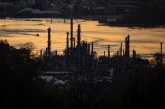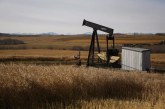
[ad_1]
By David Yager
March 16, 2021
Aggressive climate crusaders advocating for the immediate replacement of fossil fuels rarely tell this part of the story.
That fossil fuels are the primary reason why 7.8 billion people can live longer and better in the 21st century. Fewer suffer from malnutrition and starvation every year, a trend that has been improving for decades. Even though the population has grown steadily, in the past thirty years the total number defined as “undernourished” continues to decline.
We are reminded repeatedly that airborne emissions from coal, oil and natural gas combustion and industrial applications pollute the atmosphere, impair our health and kill people.
But the benefits of fossil fuels are invariably ignored. Incredible improvements in crop yields on a per hectare basis in the past century have done the exact opposite; created, sustained and prolonged many more lives than carbon emissions and pollution have claimed.
The key ingredient is low cost and plentiful nitrogen-based fertilizer originally made from coal and later natural gas. A 2019 CBC article titled “How fertilizer made from Alberta natural gas helps feed the planet” tells the story. In 1909 German chemist Fritz Haber invented a process to convert atmospheric nitrogen into ammonia. Using fossil fuels under high pressure, Haber created ammonium nitrate, a combination of nitrogen, hydrogen and oxygen which helped plants grow. Haber would later be awarded the Nobel prize for his efforts. 0
Energy historian Vaclav Smil of the University of Manitoba told the CBC, “This was perhaps the most important invention in human history, in the sense that you have something like three or four billion people are alive today who wouldn’t be otherwise.”
Originally the process used coal but later switched to natural gas. With gas from the Turner Valley and Bow Island discoveries plumbed into Calgary early last century, Alberta’s first venture into petrochemicals was in 1941 when a plant was opened to produce ammonia and ammonium nitrate. Ammonium nitrate also has applications for military explosives, so this was also part of the war effort.
This was not only a first for Alberta’s petrochemical industry, but the first fertilizer plant in North America to use natural gas as feedstock. By 1943 the facility was producing ammonium nitrate fertilizer in pellet form. This business still operates from Calgary under the company name Nutrien (It started as Consolidated Mining and Smelting in Trail, then changed to Cominco Fertilizer, then Agrium, then Nutrien).
This product using this process is now produced all over the world. Thanks to fossil fuel natural gas.



